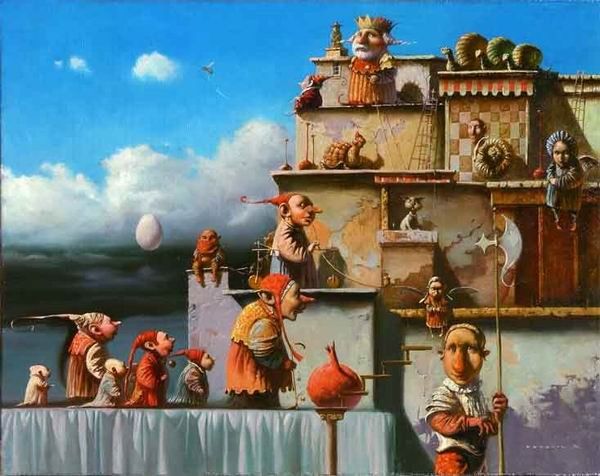
PRINCIPIA SCACCHORUM, Part 4: Chess Goes Backwards to Find its Roots
Chess masters set apart from the rest by the quantity and quality of thier mental representations (in the classic chess studies of de Groot (1965) and Chase and Simon (1973), chess experts were found to hold in memory (an estimated number of over 50,000) thousands of board patterns). Then mental processes manipulate these mental images to bring effective solutions at the board.
Understanding patterns of piece relationships, storing them in brain's long-term memory, then recognizing and analyzing in one's mind's eye to make decisions with them during games is the most quintessential chess skill.
The traditional early training method that starts with the moves doesn't do much toward constructing mental patterns of piece relationships and developing effective board vision. In other words, it doesn't help the beginner develop those parts of the brain that are most relevant to playing chess well. That is why chess, unjustifiably considered a game tough to learn, might be the field with the largest number of dropouts.
Early training is critical in that it sets limitations to how far we can go in an area. It shapes the course of all later cognitive development.
"This is 'the bent-twig effect.' If you push a small twig slightly away from its normal pattern of growth, you can cause a major change in the ultimate location of the branch that grows from that twig; pushing on a branch that is already developed has much less effect." Anders Ericsson, Peak: Secrets from the New Science of Expertise.
As the traditional teaching has been failing to push that small twig into the right direction (the 99.5% drop out rate is an irrefutable proof), we need a new teaching method that would help grow a strong branch of mental representations at later stages.
We realize now that piece relationships should be the main focus from the Chess Moment One together with the moves, actually even before the introdiction of piece movements.
But how to go about it in practical terms? How can we do without the moves at all, one may ask?
Ironically, the more expertise we have developed in a domain, the harder it is for us to look at things in fresh, innovating ways. Some call it "tyranny of experience."
So let us unshackle the chains of the "moves first" tyranny.
Before we embark on our journey, let us see what approach we're going to take. Here is Dr. Bertrand Russell, from Introduction to Mathematical Philosophy, first published in London, 1919. He talks math, we talk chess [the text in brackets is changed from the original that read "math"].
"The beginnings of [chess] logic are less definitely known than its later portions," [but a clear definition of the chess basics will be of absolute significance in developing new early training methods.]
"[Chess] is a study which, when we start from its most familiar portions [the moves, etc.], may be pursued in either of two opposite directions. The more familiar direction is constructive, towards gradually increasing complexity:" [from the moves, basic check mates and elementary tactics to more advanced topics like strategy.]
"The other direction, which is less familiar, proceeds, by analysing, to greater and greater abstractness and logical simplicity; instead of asking what can be defined and deduced from what is assumed to begin with, we ask instead what more general ideas and principles can be found, in terms of which what was our starting-point can be defined or deduced."
It is the fact of pursuing this opposite direction that will characterise our approach to define the true chess fundaments. We will define chess low-level effects by going backwards as Dr. Russell explained. We will see in the upcoming posts how every chess move produces multitude of these effects. The moves won't be the starting-point in any (respectable) chess book or online course any more.
* * *
Lots of people take up chess at some point in life. Yet, the initial fever cools off fast and they drop out altogether.
Going back to the basics will get us closer to designing new, more effective early instruction methods. That will help the beginner make a good head start, see progress, get out of the Chess Level 1 and ultimately stay in the game for a lifelong pleasure. Fewer dropouts and more competent chess players is the goal.
Tags: chess basics, chess fundamentals, board vision, pattern recognition, mental representations, mental processes, mental images, schema theory
Previous posts:
art Milorad Dobric, from a chess primer in Serbo-Croatian "Chess - The Game of Millions" by Dragoslav Andric
